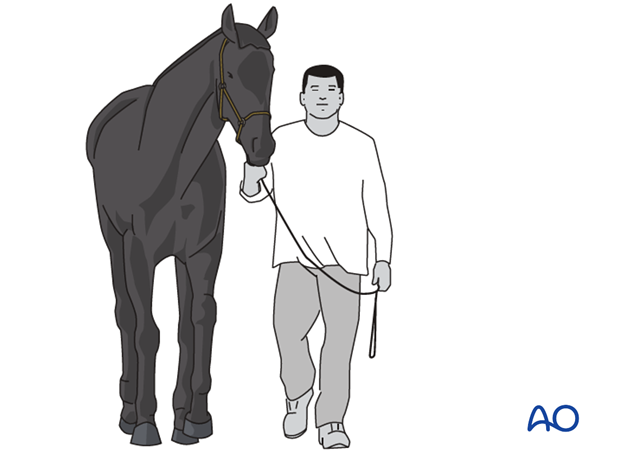Resection
1. Indications
Arthroscopic removal is recommended to relieve clinical signs of effusion and lameness and to reduce the long term effects of articular fragmentation.
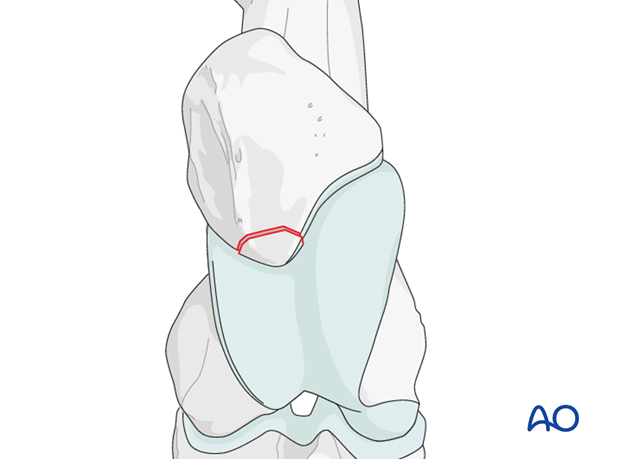
2. Preparation and approach
This procedure is performed with the patient placed in dorsal recumbency through an arthroscopic approach.
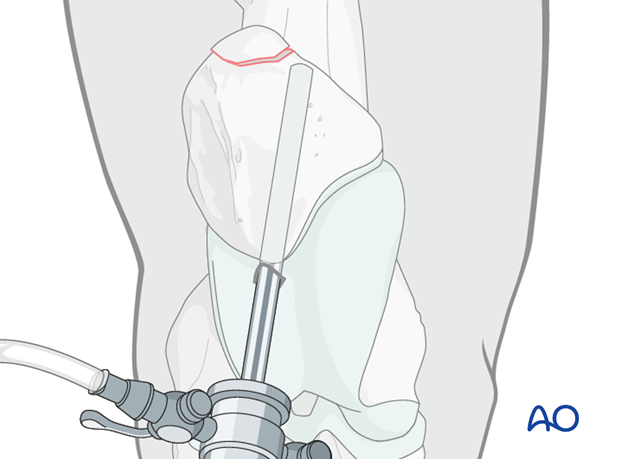
3. Surgical technique
Arthroscope placement
The arthroscope is placed in the cranial aspect of the femora-patellar joint at its most distal extent. This aids in identifying the fragment on the distal aspect of the patella.
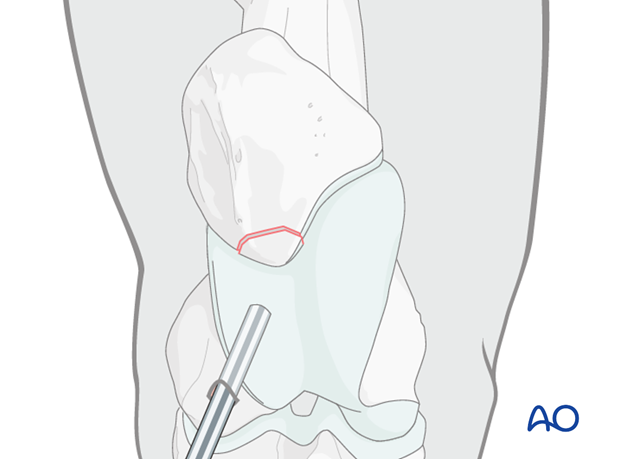
Arthroscopic examination
Examination of the distal articular surface of the patella reveals the fragment (arrow).
The fragments are usually attached to the joint capsule.
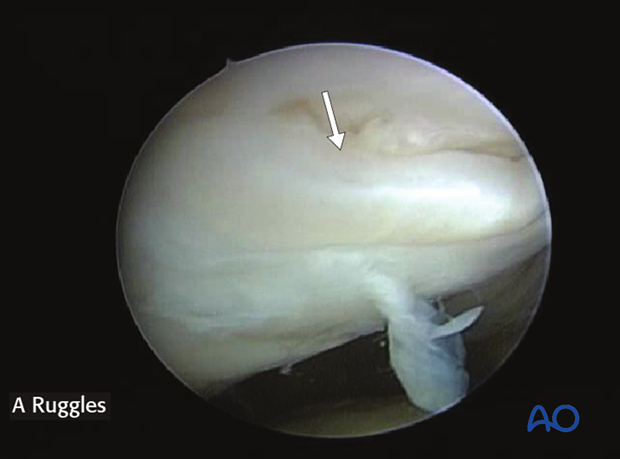
Instrument portal(s)
Appropriate instrument portal(s) are made in the femoropatellar joint.
Fragment removal
An arthroscopic scalpel is used to sharply dissect the soft tissues off the fragment. The fragment is removed using Ferris-Smith rongeurs.
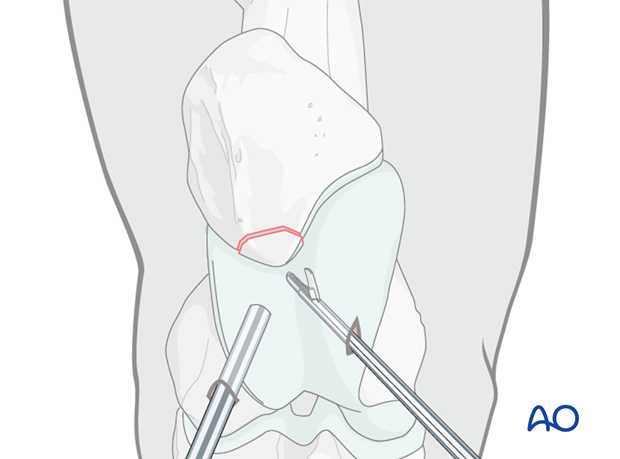
Debridement
The fragment bed (fb) at the distal aspect of the patella (p) is debrided as needed and the joint lavaged to remove debris.
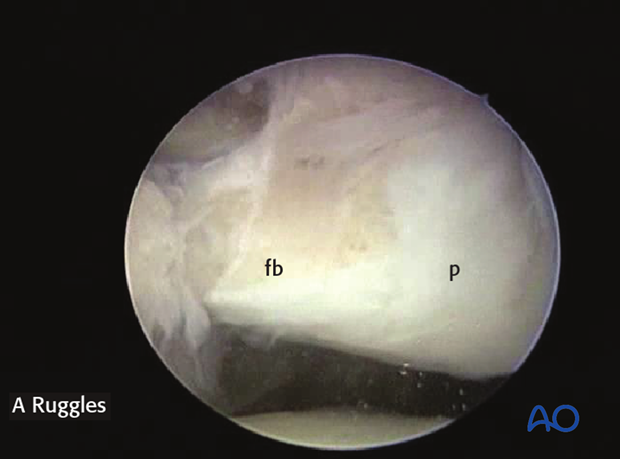
4. Overview of rehabilitation
The horse is held in box stall rest for 4 weeks with hand-walking during weeks 3-4 followed by pasture turn out for 4 weeks.
At 8 weeks return to training is recommended for small fragments. Some horses need additional time off.
